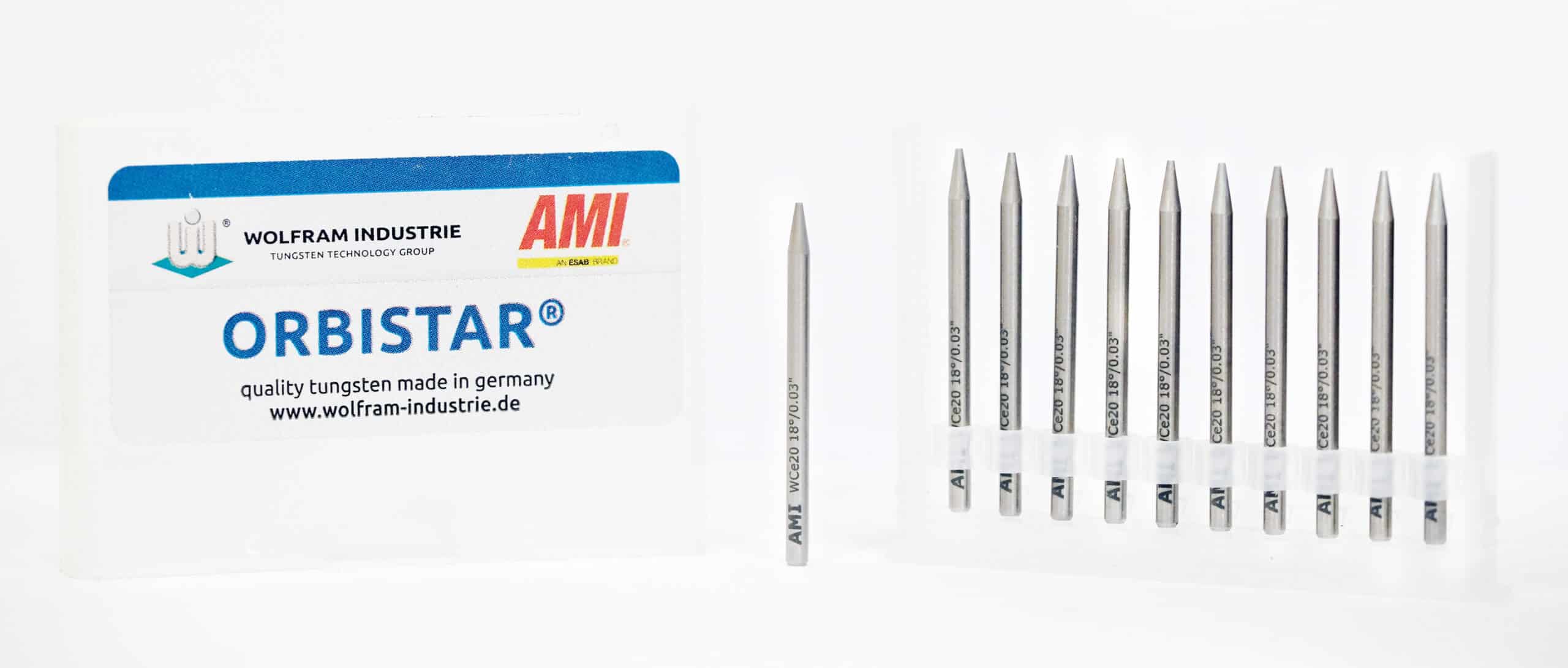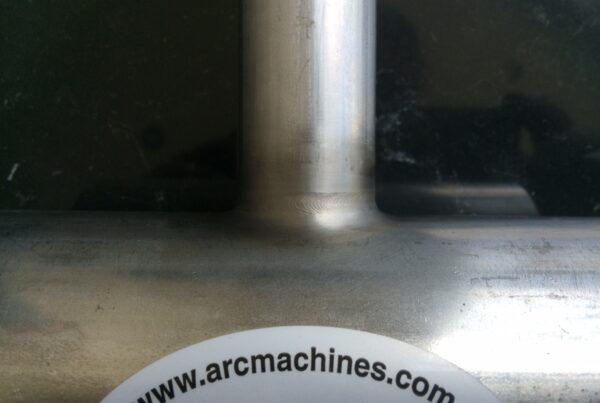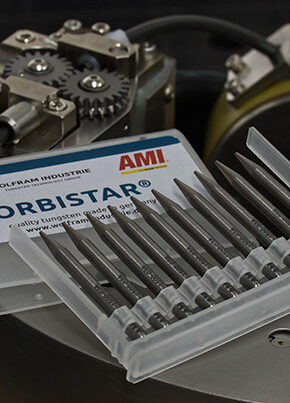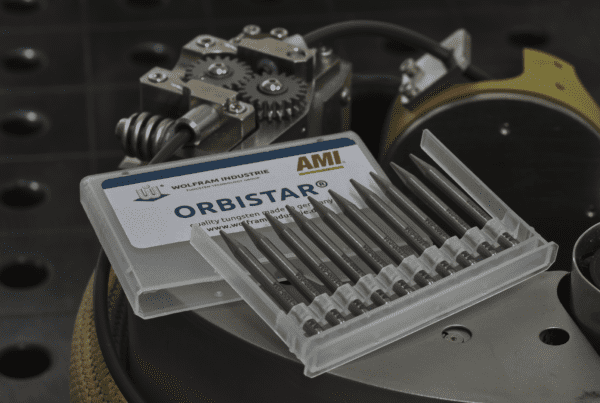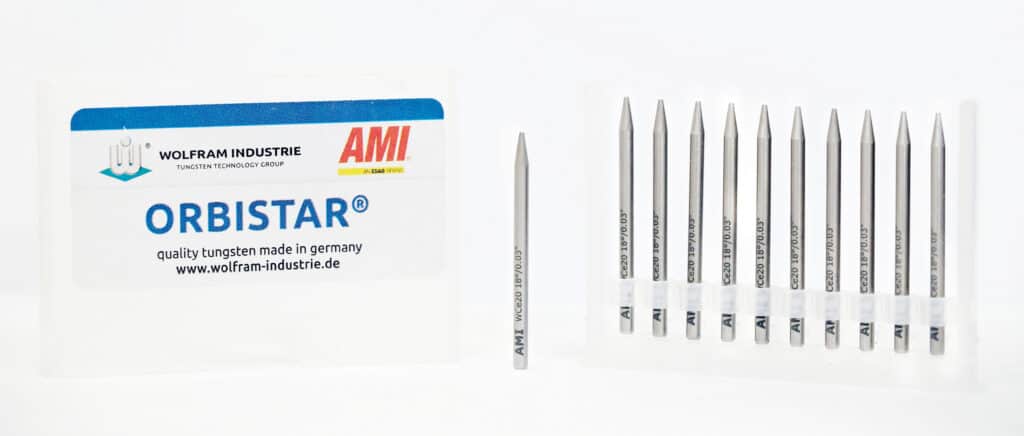
Inconel® is a specialty metal that blends nickel and chromium together into an alloy that is extremely resistant to corrosion, even under extremes of heat and pressure that typically increase corrosion on metals like steel and stainless steel. Inconel is also far stronger than these more common metals, being able to resist pressure and other mechanical stresses well beyond the capacity of steel or stainless steel.
However, Inconel is also an alloy that uses just a trace amount of iron in its mix. Nonferrous metals and alloys are notoriously difficult to weld for welders used to steels. Given the metal’s expense, the difficulties of welding it, and the consequences of mistakes, it is natural for welders to wonder what the best tungsten for Inconel is. The truth is that the types of gas tungsten arc welding (GTAW) electrodes used to weld Inconel are largely the same as those used for steel, including stainless steel. The chief difference is the machine settings and weld patterns used in welding Inconel.
Welding Techniques for Inconel
The good news is that welding Inconel® isn’t significantly more difficult than welding stainless steel. The bad news is that, like stainless steel, Inconel is easily contaminated, prone to heat distortion, and can crack under the stress of heating and cooling.
The chief issues that welders encounter when welding Inconel, and the GTAW welding techniques used to mitigate them, are:
- Viscosity: Molten Inconel is less fluid and more resistant to being guided than the steels and stainless steels that welders are usually used to working with. The solution is to bring amperages and heat up to make the Inconel as fluid as possible and to keep arc lengths short to allow better control over the weld puddle.
- Contamination: Like stainless steel, Inconel can be contaminated by atmospheric elements during welding. The solution, of course, is to keep the molten puddle shielded by inert gas throughout the weld. Welders should be mindful to keep the molten tip of any fill material under gas coverage, and to keep the flow of welding gas going at the end of the weld while the molten puddle finishes solidifying.
- Cracking: Inconel is prone to cracking if it is allowed to cool too quickly after welding. The solution is to keep the heat on after welding and slowly taper it off to allow the weld to solidify without the creation of stress points.
Welders frequently note that during welding, the molten pool of Inconel often appears grainy or contaminated during welding. This is normal, and if the weld puddle and fill material remain properly shielded, then this graininess shouldn’t represent contamination of the weldment.
If welders are careful to account for Inconel’s unique properties, they will find that several different tungsten alloys may be used to weld Inconel. The best tungsten for Inconel welding will depend on the circumstances of the welding project.
The Best Tungsten for Inconel Welding
In essence, the best tungsten for Inconel® welding is any type of tungsten that can be used for stainless steel. This includes tungsten that has been alloyed with metal oxide dopants like thorium, cerium, or lanthanum to enable a higher amperage and voltage carrying capacity. Chief among these is thoriated tungsten, also commonly called red tungsten due to its standardized color code designation. Thoriated tungsten has been used for high-specification and high-purity welding for decades, and for many, it is still the best tungsten for GTA welding of Inconel or other metals that require high heat and are challenging to weld.
Along with a tungsten electrode that can carry higher amperages, automated welding processes can ensure the very best Inconel welds.
However, thorium is slightly radioactive. While the alpha particles it releases cannot penetrate skin, the dust that is created when thoriated tungsten is ground can be ingested and inhaled and can pose a long-term health hazard. As a result, it is increasingly being replaced by non-radioactive alternatives, chiefly ceriated—color code orange—and lanthanated—color code gold—tungsten electrodes. An overview of these three types of tungsten can be seen in the table below:
| Color Code | Dopant | Tungsten Percentage | Additive Percentage | Current |
| Red | Thorium | 97.3 | 1.7 – 2.2 | AC/DC |
| Orange | Cerium | 97.3 | 1.8 – 2.2 | AC/DC |
| Gold | Lanthanum | 97.8 | 1.3 – 1.7 | AC/DC |
All three electrode types have tungsten/dopant percentages in the 97 percent range with around two percent dopant. This is a relatively high percentage of additive materials. The zirconiated tungsten usually used to weld aluminum, for instance, is a little under half a percentage point zirconium. The proportion of dopant used in the tungsten seen in the chart above means that these electrodes have the ability to carry a high level of amperage. This high amperage is necessary for welding Inconel. Along with a tungsten electrode that can carry higher amperages, automated welding processes can ensure the very best Inconel welds.
Why GTAW Orbital Welding Is Best for Inconel
Inconel® is a unique alloy, with extraordinary properties of strength and corrosion resistance. In fact, it is one of a class of alloys commonly termed “super alloys.” It matches these extraordinary properties with an equally extraordinary price. Inconel is expensive enough that laying down Inconel cladding on the interior of a steel or stainless steel pipe or overlaying the exterior with Inconel is generally more cost-effective than simply using Inconel for the whole fixture.
Because it’s so costly, Inconel must be welded correctly and with minimal waste. In projects using Inconel pipes or tubes, or where pipes are being clad with Inconel, orbital welding provides the best way to accomplish this goal. Orbital welding allows critical elements of the Inconel welding process, such as arc length, to be controlled by machine. Travel speed, oscillation, and arc disengagement are performed with mechanical precision to programmed parameters. This also helps ensure adequate gas coverage throughout the time Inconel is molten. In order to get the best results, the best tungsten for Inconel should be used in conjunction with precisely automated orbital welding equipment.
Arc Machines, Inc. specializes in high-specification orbital welding equipment, including precut and polished thoriated, ceriated, and lanthanated tungsten electrodes. For inquiries regarding products, contact sales@arcmachines.com. For service inquiries, contact service@arcmachines.com. Arc Machines welcomes the opportunity to discuss your specific needs. Contact us to arrange a meeting.

